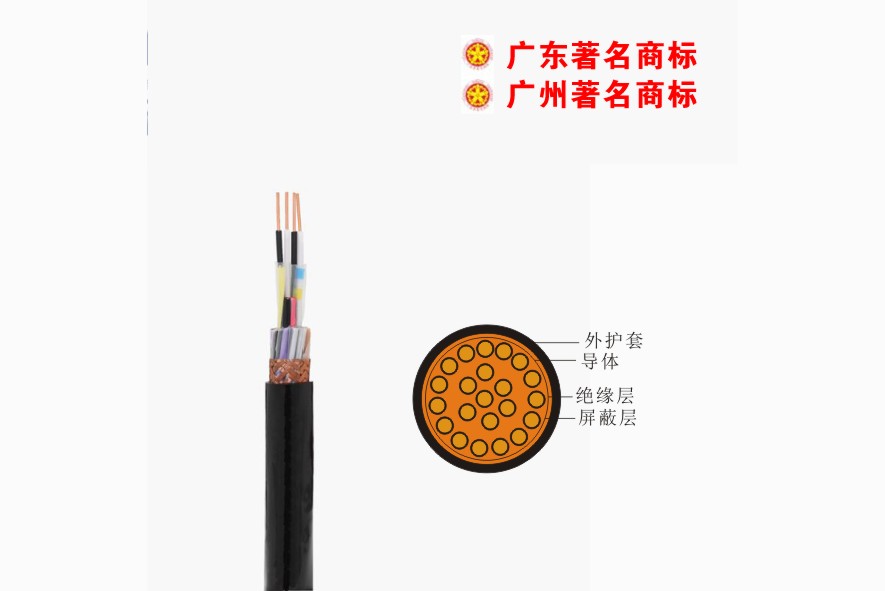How much do you know about mineral cables?
How much do you know about mineral cables?
Mineral cables generally refer to mineral insulated cables, which can be divided into mineral fire-resistant cables in the mineral insulated cable industry.
Mineral insulated cable is a kind of inorganic material cable. The outer layer of the cable is a seamless copper sheath, and between the sheath and the metal core is a tightly compacted magnesium oxide insulating layer. Mineral insulated cables are divided into distribution cables, heating cables and heating elements, thermocouple cables and compensation cables, special cables, etc. according to their uses.

1. Use characteristics of mineral cable
safety
Mineral insulated cables are made of copper and magnesium oxide. The melting point of copper is 1083°C, and the melting point of magnesium oxide is 2800°C. So when its temperature does not exceed 1000 ℃, the cable structure will not cause problems. Therefore, it will not disintegrate due to melting or burning in most places, and it will not spread fire. The insulation layer of mineral insulated cables is made of inorganic materials, which will not emit any smoke and harmful gases. In contrast, traditional cables (including flame-retardant, low-smoke and low-halogen, low-smoke and halogen-free and their corresponding fire-resistant Cable) smoke and harmful gases will be present when it catches fire, is burned by fire or is damaged by long-term overload and insulation.
Fire resistance
At present, the commonly used PVC cables (common type, flame-retardant type, fire-resistant type, etc.) have a maximum operating temperature of 70°C. Above this temperature, the insulation layer will accelerate and its life will be shortened, which will cause a fire. According to the British BS6387 cable fire resistance test standard, only mineral insulated cables can meet the following three tests: A: open flame burning at 950°C for 3 hours, B: open flame burning at 650°C, spraying water for 15 minutes, C: open flame burning 950 ℃, impact with heavy objects every 30 seconds, and the domestic fire-resistant cable (NH-VV) can only meet the A-type test in the GB12666.6-90 fire resistance test: an open flame burns at 950°C for 90 minutes. However, the fire-resistant cables produced by most manufacturers can only meet the Class B test; an open flame burns at 750°C for 90 minutes.
Large current carrying capacity
Because the normal use temperature of mineral insulated cables can reach 250°C. IEC60702 stipulates that the continuous working temperature of mineral insulated cables is 105°C. This is to consider the terminal sealing material and safety requirements. Even so, its interception capacity is far more than other cables, because magnesium oxide powder has a better conductor coefficient than plastic, so the same working temperature, the interception capacity is larger, for For lines above 16mm, one cross-section can be reduced, and two cross-sections can be reduced where human contact is not allowed.
Waterproof, explosion-proof, corrosion-resistant
Because the cable adopts low-smoke, halogen-free and high-flame retardant materials as the sheath, it has high corrosion resistance (the plastic outer sheath is only needed in occasions where certain chemicals are corroded), and the conductor, insulation and sheath are densely compressed. Therefore, it not only protects against water, moisture, oil and some chemical substances, it is suitable for the connection of explosion-prone places and various explosion-proof equipment and equipment.
2. Features and uses
Compared with organic cables, it is resistant to high temperature, fireproof, explosion-proof, non-combustible (continuous long-term operation at 250°C, and short-term operation of 30min at 1000°C limit state), large current carrying capacity, small outer diameter, and mechanical strength High, long service life, generally do not need the advantages of independent grounding wire. Mineral insulated cables are widely used in nuclear power plants, metallurgy, chemical industry, mines, aerospace, high-rise buildings, airports, docks, subways and other crowded places to protect fire pumps, fire elevators, important loads, emergency evacuation instructions, And electricity for important fire-fighting equipment such as smoke prevention and exhaust systems.


 Company Profiles
Company Profiles Company Culture
Company Culture Message
Message Honor
Honor Video Center
Video Center Company Reality
Company Reality Pearl River Cable
Pearl River Cable Low Voltage Cable
Low Voltage Cable Medium Voltage
Medium Voltage Mineral Cable
Mineral Cable Control Signal Cable
Control Signal Cable Corporate News
Corporate News Cable Information
Cable Information Media Reports
Media Reports Network Reprint
Network Reprint


